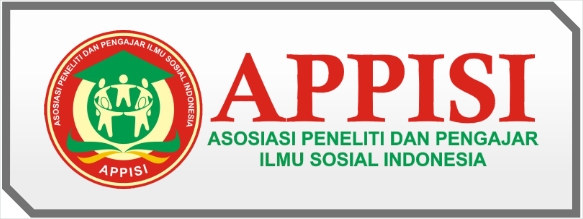Analisis Upaya Indonesia Dalam Menangani Pembebasan WNI Dari Kelompok Terorisme Abu Sayyaf
DOI:
https://doi.org/10.59581/jhsp-widyakarya.v2i2.2903Keywords:
Abu Sayyaf, Terrorism, Non-Governmental Actors, Ship Pirates, Indonesian NegotiationAbstract
Abu Sayyaf is a separatist group originating from the Philippines with headquarters in Western Mindanao, Basilan, Jolo and Sulu. The existence of the Abu Sayyaf is trying to build the Islamic Mindanao Islamic State (MIS). Abdurrajak Janjalani is the leader of the Abu Sayyaf which is affiliated with the Al Qaeda terrorist network. The Abu Sayyaf's actions are considered extreme and disturbing the people of the Philippines and the Southeast Asian region. The footprints built by the Abu Sayyaf tend towards radicalism and acts of terrorism. The Abu Sayyaf carries out many bombings and kidnappings and has expanded into maritime areas by pirating ships. Indonesia became one of the countries that fell victim to piracy in 2016 when the barge Anand 12 and tugboat Brahma 12 were hijacked while traveling to Batangas, Southern Philippines. The aim of the piracy was so that the Abu Sayyaf could receive ransom money to fund their struggle. The Indonesian government has made various efforts to free Indonesian citizens who are being held hostage. The Indonesian government is prioritizing the negotiation route in this case. Indonesia is coordinating with the Philippine government, involving non-state actors in carrying out a social approach. The involvement of non-government actors is an opening to build dialogue with the Abu Sayyaf until the negotiation process is successful.
References
Abuza, Z. (2005). Balik-Terrorism: The Return Of The Abu Sayyaf (Issue September). http://www.carlisle.army.mil/ssi%0ATo
Dewi, P. R. K. (2020). Strategi Diplomasi Indonesia Dalam Pembebasan 10 Abk Wni Dari Kelompok Abu Sayyaf Tahun 2016. Juli, 1–22. https://erepo.unud.ac.id/id/eprint/2150/
Ghofur, A. (2016). Dinamika Muslim Moro di Filipina Selatan dan Gerakan Sparatis Abu Sayyaf. Sosial Budaya, 13(2), 175–188.
Gumilang, P. (2016). Ryamizard Sebut Filipina Segera Bebaskan Sandera Abu Sayyaf. CNN Indonesia. https://www.cnnindonesia.com/tag/debat-cawapres
Maiese, M. (2017). Levels of Action (Lederach’s Pyramid). Beyond Intractability. https://www.beyondintractability.org/essay/hierarchical_intervention_levels
Pujayanti, A. (2016). Upaya Pembebasan Wni Sandera Kelompok Abu Sayyaf. Info Singkat Pusat Penelitian Badan Keahlian DPR RI, 8(7), 2009–2012.
Ramadhan, I., & Ridwan, M. (2020). Terorisme Dan Jihad Tinjauan Hukum Dan Sosial Keagamaan (1st ed.). Pustaka Pelajar.
Tim Hukumonline. (2023). Terorisme: Pengertian, Faktor Penyebab, dan Jenis-Jenisnya. Hukum Online,Com. https://www.hukumonline.com/berita/a/terorisme-adalah-lt6183b09848f15/
Triana, N. (2019). Alternative Dispute Resolution (Penyelesaian Sengketa alternatif Dengan Model Mediasi, Arbitrase, Negosiasi dan Konsiliasi).
Wahyudi, A. (2015). Konflik, Konsep Teori Dan Permasalahan. Jurnal Publiciana, 8(1), 1–15.
Downloads
Published
How to Cite
Issue
Section
License
Copyright (c) 2024 Ayu Maruti, Vetra Raisha, Bella Widya, Junior Chavin Megawanto, Tiffany Setyo Pratiwi

This work is licensed under a Creative Commons Attribution-ShareAlike 4.0 International License.













